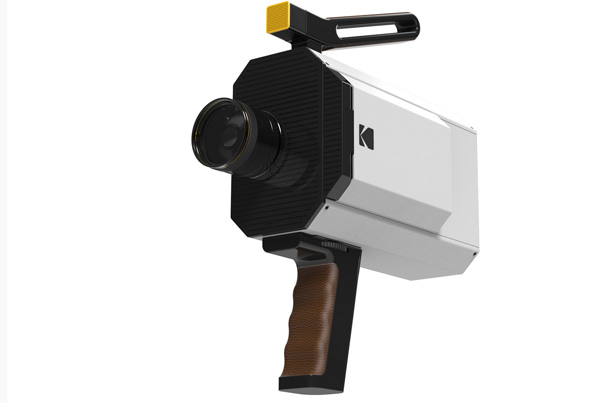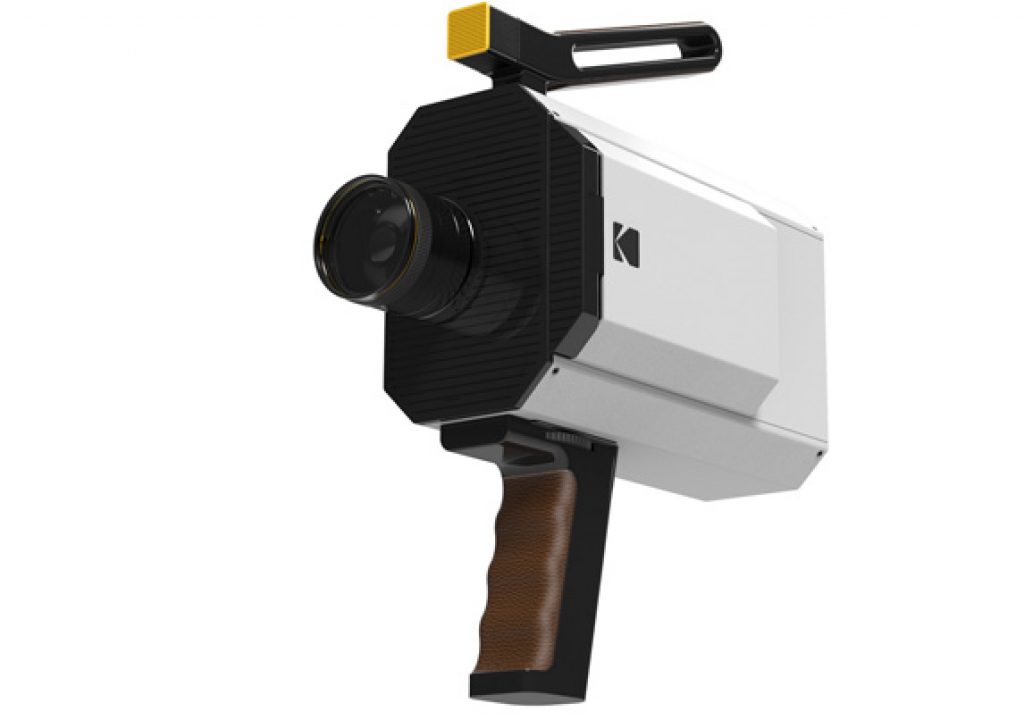
The Super 8 Revival Initiative, as Kodak calls it, is centered on a new Kodak Super 8 camera that combines the classic features of a Super 8 with digital functionality.
It’s still an early prototype that Kodak has to show, but the company is excited with all the support they’ve received. Director and producer Christopher Nolan began making short movies with his father’s Super 8 camera at the age of 7. When told that Kodak wanted to revive the format, Christopher Nolan said “The news that Kodak is enabling the next generation of filmmakers with access to an upgraded and enhanced version of the same analog technology that first made me fall in love with cinematic storytelling is unbelievably exciting.”
“For me, 8mm was the beginning of everything,” said Academy Award-winning director Steven Spielberg. “When I think of 8mm, I think of the movies.”
“While any technology that allows for visual storytelling must be embraced, nothing beats film,” said JJ Abrams, writer and director of Star Wars: The Force Awakens . “The fact that Kodak is building a brand new Super 8 camera is a dream come true. With a gorgeous new design, interchangeable lenses and a brilliant scheme for development and delivery of footage, this camera appears to be the perfect bridge between the efficiency of the digital world and the warmth and quality of analog.”
It’s interesting to see both Steven Spielberg and JJ Abrams supporting the revival of Super 8 format. After all, in 2011 they created a science fiction film thriller, telling the story of a group of teenagers filming their own Super 8 film. At the time Abrams wanted to film the movie using the Super 8 format, but the idea had to be abandoned, as the grain of the emulsion made it impossible to introduce the necessary computer generated images into the footage.
Kodak’s new Super 8 film camera is not about the simple introduction of a camera. The company has built a roadmap that includes a range of cameras, film development services, post production tools and more. “It is an ecosystem for film” said Jeff Clarke, Eastman Kodak Chief Executive Officer. “Following the 50th anniversary of Super 8, Kodak is providing new opportunities to enjoy and appreciate film as a medium.”
Yes, this is all happening right after Super 8 celebrated 50 years, as the film was created by Kodak in 1965. Film has generated huge buzz in Hollywood recently as the chosen medium for award-winning movie directors and blockbuster movies. Now the Kodak Super 8 Revival Initiative is being applauded by the industry’s top directors, many of whom got their start on Super 8 film.
By launching its first Super 8 camera product in more than 30 years, Kodak is demonstrating its resolve to ensure that film plays an important role in the future of filmmakers – both professionals and amateurs. This product, like many in Kodak’s history, will be a tool for artists and all those who aim to capture special moments.
As one of the first American companies to recognize the value of industrial design, Kodak has engaged with Yves Béhar, design entrepreneur and founder of Fuseproject, to ensure that the new Kodak Super 8 camera design echoes the look and feel of the original Kodak Super 8 camera, introduced in 1965, while adding a modern sensibility.
“Kodak has always represented innovation that is approachable while delivering the craft of filmmaking. Our design aspires to express both these ideals. We are designing the Kodak Super 8 camera with robust materials and new ergonomic features to serve the needs of Super 8 fans, whether shooting action or static scenes,” said Béhar.
As interesting as it may sound, I am curious to see how Kodak, that has discontinued most of their Super 8 films the last years, manages to get film to make their new Super 8 film camera roll. In 2005 Kodak discontinued the most popular stock Kodachrome due to the decline of facilities equipped for the K-14 process, in December 2012 they stopped production of their last colour reversal stock for Super 8, Ektachrome 100D. This means that the only available reversal film from Kodak is Tri-X, a monochrome emulsion.
Maybe, after all, Kodak wants users to explore negative film, like their Vision 50D for Super 8 format, which can be transferred to digital, a marriage of old and new technology that may offer some interesting options. Super 8 is still a format that some filmmakers prefer, and with festivals still and sometimes only accepting the format, along with institutions using the format for their Cinema courses, there may be a niche market which will allow to keep the format alive.
The projected specifications for the Kodak Super 8 film camera prototype indicate that the camera will offer variable speeds – 9, 12, 18, 24 and 25 fps – a C-mount fixed 6mm lens, with an optional 8-48 zoom lens, manual focus & iris, a 3.5 inches display that has a standard definition video input and supports swivel +/- 45 degrees, and a built-in light meter for supported speeds of all Kodak film types.
So, on the heels of celebrating 50 years of manufacturing Super 8 film, Kodak is launching an initiative aimed at putting Super 8 cameras into the hands of a new generation of filmmakers as well as meeting the needs of top directors, indie filmmakers and others who appreciate the art and craft of filmmaking. If they succeed, we all will have more choice, although this is, surely, not the camera everybody will be after. But having choice the option to choose analog or digital is a good thing, I presume.

